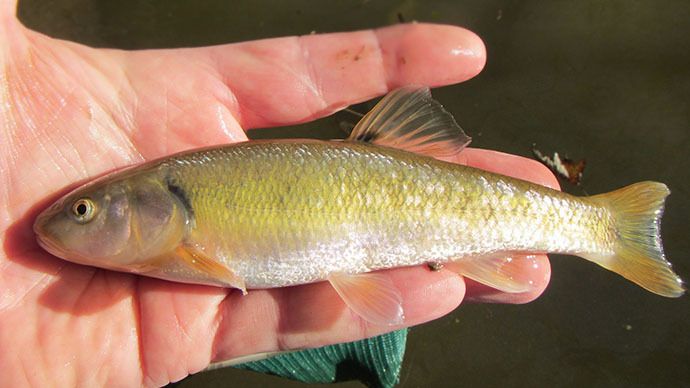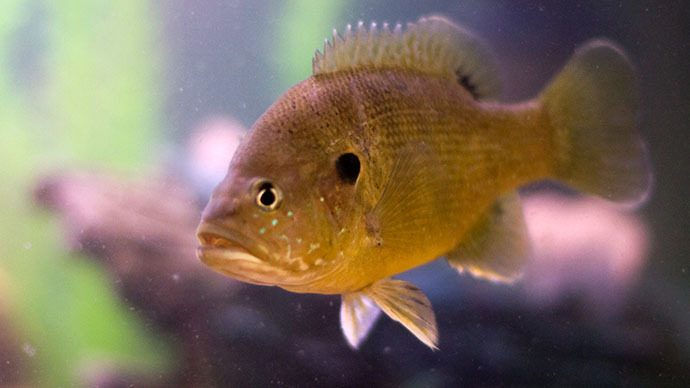Fracking fluid linked to fish die-off

A new government study found that a 2007 fracking fluid spill in Kentucky killed off several species of fish, including two that were classified as “threatened.” Some of the surviving fish developed gill lesions, liver damage and spleen damage.
“Our study is a precautionary tale of how entire populations could be put at risk even with small-scale [fracking] fluid spills,” lead author Diana Papoulias wrote in a news release.
The study, which was conducted by the US Geological Survey and the US Fish and Wildlife Service, studied water samples and the bodies of the exposed fish to determine the effects of fracking chemicals on their health.
The study was based on a fracking fluid spill that occurred at the Acorn Fork Creek in southeastern Kentucky in the mid-2007. Nami Resources Company, an oil and gas exploration company, spilled the fluids into the creek, which killed nearly all aquatic life in direct exposure to the substances.
Narrow stream flows were contaminated with hydrochloric acid and other chemicals used for fracking. Water supplies were polluted and numerous species of fish suffered “a significant die-off,” the USGS announced on Wednesday. The fluids killed significant numbers of Blackside dace, a threatened species of ray-finned fish endemic to Kentucky, Tennessee and Virginia. The Creek chub and the Green sunfish also experienced a die-off.

Surviving fish exposed to the chemicals developed gill lesions and suffered from liver and spleen damage, the study found. These symptoms mirror those experienced by fish exposed to acidic water and toxic concentrations of heavy metals, the USGS reports.
The fracturing fluids dropped the creek’s pH levels from 7.5 to 5.6 and increased stream conductivity from 200 to 35,000 microsiemens per centimeter.
The report’s authors note that it is important to examine the effects of fracking fluids on fish to determine how it might affect people. Tierra Curry, a scientist at the Center for Biological Diversity, said in a press release that the Kentucky spill demonstrates “the growing threat that fracking poses to endangered species, public health and drinking water supplies across much of the country.”
“These species use the same water as we do, so it is just as important to keep our waters clean for people and for wildlife,” co-author Tony Velasco said. “This is an example of how the smallest creatures can act as a canary in a coal mine.”
Across the Appalachian Mountains, numerous waterways are already polluted with metals and acid from coal mine operations, and more than 20 studies have linked public health problems to this contamination, the Center for Biological Diversity reports. Curry believes that fracking will only add more harmful chemicals to the water supply, potentially endangering Americans who live near hydraulic fracturing sites.
“Replacing coal mining with fracking is a jump from the frying pan into the fire,” Curry said. “We’ve simply got to figure out how to move away from these dirty fossil fuels that are threatening the lives of people and endangered species.”














